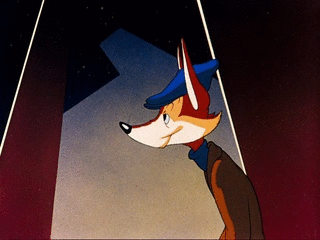
The light has just gone out in the bears’ house, and the Cockney fox takes a drag on a cigarette. It is a very intricate special effect done to give an ominous feel to the opening scene. It’s also an exceptionally staged layout. Above is a [poor] animated GIF illustrating a lighting effect I had never noticed before in The Unbearable Bear. The great restoration drew my attention to it.
I guess the overall sentiment regarding the very odd Looney Tunes Mouse Chronicles collection that was released to Blu-Ray and DVD this week is that it’s a showcase that very accurately illustrates the evolution of Chuck Jones’s directorial style over his fist twelve years. These Warner cartoons get me thinking like nothing else can, so bear with me on this one.
This will be a minority opinion, but I don’t think the early Jones cartoons (arbitrarily, before the 1942 release season) are as bad as they’re made out to be. Though it is a little torturous to watch all of these Sniffles cartoons in one sitting, isn’t that true of most reoccurring characters? The Sniffles cartoons are more charming and successful as gentler comedies than the Disney Studio films were, particularly when Disney was using characters that specifically demanded rougher edges and sharper timing (Donald Duck specifically).
The early films are often quite off, and I would only consider very few of them classics (most certainly Naughty But Mice, Little Brother Rat, and Bedtime for Sniffles). Yet isn’t the near entirety of 1939-40 Schlesinger cartoons a little off? Consider that while Jones was too cutesy, Tex Avery was knocking out travelogue after travelogue and Bob Clampett was directing many very weak Porky Pig cartoons (ones that used radio references as crutches and showed plain exhaustion with the character). Nothing of merit came from the Ben Hardaway-Cal Dalton unit. Almost cynically, things get back on track again at Schlesinger’s when Friz Freleng, the least innovative but funniest of the directors, returns.
The man did have a flair for comedy and charisma from the beginning. However clumsily handled, Jones also had a penchant for humorous self-awareness, as exemplified by the intelligently insane Daffy in Daffy Duck and the Dinosaur and Bugs Bunny in Elmer’s Candid Camera and Elmer’s Pet Rabbit. In The Brave Little Bat, the titular Batty is a deliberate assault on the viewer’s patience; he is so overly cutesy and obnoxious that there’s no other way to take him than intentionally taxing. (This is emphasized by a rather repulsive shot of the damage that befalls a cat after he falls from a ledge – more or less Batty’s doing.) He reused the gabby-to-the-pont-of-abhorrence gimmick even more brilliantly in The Unbearable Bear.
The most overwhelming flaw evident in all of these Sniffles cartoons is the bloated timing. Animators tend to mimic the kind of timing and gag structure Laurel and Hardy specialized in (whether they’re aware of it or not). In the best Laurel and Hardy films, even the most mundane of routines have a life of their own, thanks mainly to the rich, unpretentious nature ingrained in the duo’s acting. The animator merely thinks a scene can be made funnier if it’s longer, and since he or she doesn’t have a being that can think for itself at his or her disposal, so the drawing (and thereby acting) becomes too self-conscious. There is no grace to be won and the payoff usually isn’t worth the belabored set-up. It’s a problem with most Disney cartoons and their imitators; early Jones is no exception.
It’s never been explicitly stated why Jones set out to improve his timing and cutting. Supposedly Freleng went to bat for Jones when Schlesinger was planning to demote Jones because he didn’t like his earlier pictures, in spite of them getting positive audience response and even glowing reviews (Manny Farber was a shill for Jones his entire career). Freleng told Jones that he had to get more speed, and comedy, into his pictures like he, Avery, and Clampett had. Jones knew Freleng was right, and much to his resentment, he knew Schlesinger was too. It didn’t stroke his ego, that’s for sure.
Freleng said (according to Corny Cole), “Chuck Jones brought ego into the animation business.” I think that’s largely hyperbolic, because any art worth taking seriously is the product of ego (Freleng’s best work included), but it’s one of those statements grounded in truth that Freleng always blurted out with no reservation.
Chuck Jones really is ego personified in animation, and for a large part of his career, it was ego intelligently applied more successfully than anyone else has ever managed. The proof? A string of roughly fifteen years worth of cartoons that are unbelievably great, a claim no other animation director can make. (Only when Jones was clearly uncomfortable with the story material did a true dud arise, as in the heavily referential and brutish Hush My Mouse, appearing with original titles on this set.)
The second disc of this collection, collecting the entirety of the woefully short-lived Hubie and Bertie series, illustrates a prime chunk of that period. Here, writer Mike Maltese’s influence was at its strongest, and was when Jones realized how arty and funny his cartoons could be. Needless to say, he made every effort to make them as great as possible.
I can think of very few directors in commercial Hollywood who are as wholly present in their cartoons as Jones is, right down to the very frame. His ego gave him a confidence in his own drawings that Avery, Freleng, and Clampett completely lacked. All of them more or less channeled their personalities through their writers, animators, and layout men. Yet it was only Jones who actively used his team to make up for his own weaknesses, and only within the confines of his ivory tower.
It’s why Jones didn’t have much use for Bob McKimson in his unit. McKimson was inarguably the best and most important animator at the studio, but he was, to appropriate a phrase I picked up from cartoonist/writer Jim Gomez, “his own bastard”; an artist with his own ego that didn’t jibe with Jones’s. He was a technician far better off with directors who lacked faith in their own drawings (Avery) or actively wanted his input to booster their cartoons (Clampett).
Sometimes Jones’s beautiful layouts didn’t work for animation purposes, and sometimes a story needed to be more biting to work. Jones knew that his team helped make the cartoons what they were and was probably grateful for the help, even if he disparaged them later in his “my way or highway” demeanor (Jones’s statement that Ken Harris wasn’t a good “draughtsman”, the condescending portrayal of Mike Maltese in Chuck Amuck).
Ego is a curious, incurable disease that can do irreparable harm. It certainly negatively affected Jones’s output in his last forty or so years on the planet, when he went back to his over-drawn, bloated ways, only with none of the charm of Sniffles the Mouse. But as a repertoire like his filmography proves, ego can be a very wonderful thing if the conditions are right and the person in question is surrounded by the right people.
I was intending to say most of this more towards September 21st, which will mark the centennial of Jones’s birth, but this DVD release expedited it a bit. Surely his films will delight and captivate people for another hundred years, but will the medium/industry give us another Chuck Jones, an individual capable of maintaining greatness with regularity for a similarly long period? It hasn’t done so yet, and it seems rather doubtful.

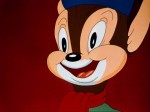
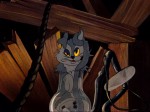
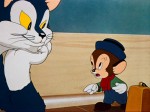
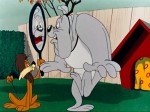
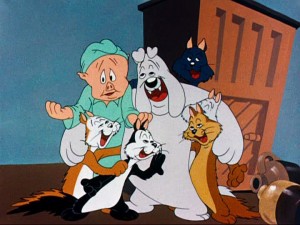
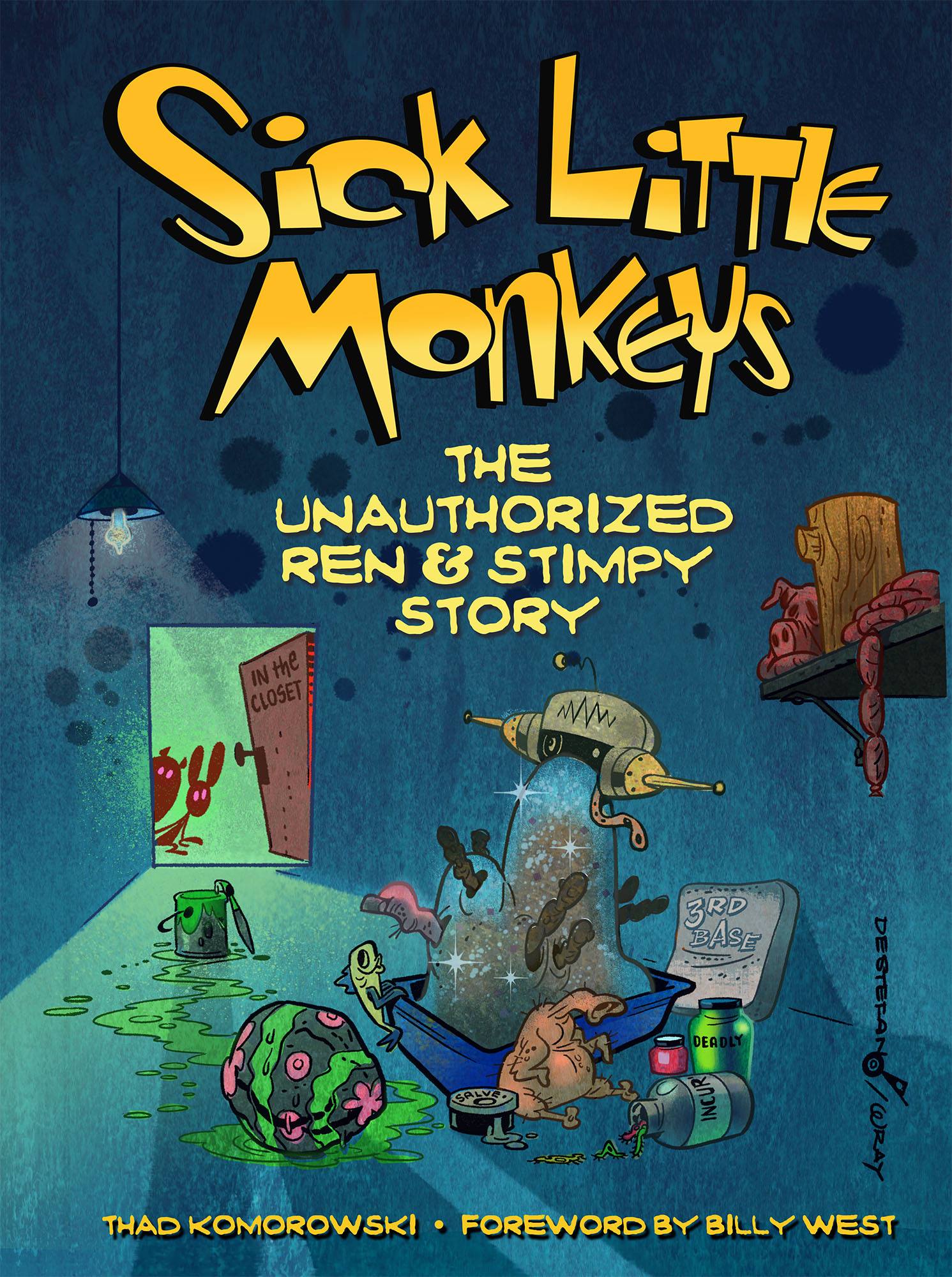
I will have to get this DVD and see for myself. Very interesting article.
Thad, your writing continues to bloom, and I believe you could write an excellent book on the history of the Warner Bros. cartoons. It’s noteworthy that by 1939, the directors you discuss had all had the last nine years to closely study all the trends of the exciting new talking film industry, the comedy shorts and radio’s huge influence on verbal gags (as well as all they had absorbed as youngsters watching silent films, particularly the comedies). By the end of the 30s they had begun to develop the personal and artistic quirks that would flower a few years later into their mature periods. I’m sure Jones’ early films were a direct result of what he and others (Tashlin, Harry Love, etc) often recalled – from the early 30s they would rush out to see the latest Disney short, and come back feeling they weren’t talented enough to say they belonged in the same industry as Walt’s boys. As to the matter of ego, all the WB greats had healthy egos, true, but Chuck’s was I think colored by his inadequate father’s superciliousness which the son inherited…and which is why, in hindsight, Chuck’s statements can appear so arrogant and elitist, and therefore often inaccurate.
Fascinating and well-written as always, Thad. Your analysis of the various creatives’ strengths and weaknesses, and how they related to each other, is unparallelled from what I’ve seen. As bizarre as this particular DVD collection is (and I don’t think I’ll ever bring myself to watch all of it in order) I think it’s essential for the Hubie and Bertie cartoons alone, let alone the chance to see an okay director evolve into a great one.
Delayed reactions are a staple of cartoons, but the Sniffles cartoons take them to a ridiculous level. Sniffles can take up to nearly 2 minutes before he realises that he’s stood on a cat’s head, and you wonder why in that time the cat hasn’t already eaten the mouse. They aren’t bad cartoons though, really, certainly no worse that Clampett’s lackluster Porky Pig entries from the same time.
‘Trap Happy Porky’ is a strangely paced cartoon. Some of the timing is super ‘Dover Boys’ level fast, but the final scene of the drunken cats (and dog) goes on for far too long, and there’s not much of a pay off to it.
The 1937-38 release season was when Warners’ staff realized what their goal to success was — comedy that ran against Disney sweetness and more towards the Fleischer-style cynicism that was being somewhat lost at the same time over in Times Square due to their attempts to be an all-purpose studio. Jones’ ascension to director status didn’t necessarily put the brakes on the comedy, but it did for the next 15-18 months or so seem to herald a refocusing of purpose at the studio. They were going to try to learn the Disney drawing rules for personality animation by osmosis, and the results were (other than in Clampett’s off-by-itself unit) cartoons that were noticeably slower than the 37-38 season’s efforts, and with characters who weren’t just more realistically drawn, but in many cases over-drawn, with too many line details that were unnecessary for the types of cartoons Warners was trying to do.
The wonderfulness of McKimson’s style (and the 1940 designs of Bob Givens) is that they paired down a ton of the unnecessary details and left characters that were still fully fleshed out. You can watch the simplification hit the Avery and Freleng units first in 1940, followed in early 1941 by Jones — who, by the end of 1941, had jumped on the bandwagon so much he was doing pointedly non-Disney experimentation in shorts like “Conrad the Sailor”. But you can also see before then why someone who made “Tom Thumb In Trouble” might be a little irked at an animator who has his own ideas about how the studio’s drawing style would be.
It wasn’t that Chuck had bad designs — his mid-1940 Elmer nailed the character’s ‘look’ even better than Givens and McKimson, but “Good Night, Elmer” is obsessively slow with its personality animation, because Jones bought into the idea at the time that to do great personality animation, you had to drag it out as long as possible to get he best effect.
Avery, in contrast, nailed Bugs Bunny’s personality in “A Wild Hare” even before we ever see Bugs’ face — his hand’s battle with Elmer’s gun barrel over the carrot gives you all the personality information you need before the first “What’s Up, Doc?” is ever uttered. Figuring that out over the next few years is what turned Jones’ cartoons into the masterpieces they would become by the mid-1940s, to the point that he became the undisputed expert on getting personality animation out of the slightest of movements.
Hi Thad,
excellent post. By the way, weren’t you supposed to post a Woody Woodpecker strip by Barks? Thanks in advance.
That comment was, I thought, obviously highly facetious.
Oh, I thought you was joking about the real content of the strip and had found some rare stuff.
Chuck was monumentally supercilious, but he was surrounded by geniuses of a different sort – the sort of people whose purpose is to give ideas and polish, and leave the meat of the project to the man who can fill it by himself. He’s like the arrogant and projective conductor who takes melodies given him, has his orchestra play it (his animators had their own styles cultivated under Chuck’s drawing and timing style, that pulsed under the cartoons and kept them captivating), and gets the mention in the New Yorker for it.
The effects in his wartime cartoons (the airbrushes, ‘Dover Boys’ poses, ‘Conrad the Sailor’ matched cuts, ‘Aristocat’ backgrounds, etc.) were there primarily, it seems, for Chuck to get his name out with novelty – and McGrew, Cannon and co. seemed to encourage him.
You only deserve that kind of ego if you make things as brilliant as Chuck did, eh?
(Also – that Roughly Squeaking clip was Washam? I thought that was what it was… but the singing cat sequence in Trap Happy Porky was Cannon at the beginning and Harris at the end? Hard for me to tell Harris apart, besides his lipsynch, moving core, good 3D, pinched features, hand timing, and his Bugs with the really high nasal break in profile… okay, so I CAN tell Harris apart, but I owe it all to you.)
Yup, the first drunk cats scene was by Cannon, and the second (with the dog) is by Harris.
I haven’t watched the Sniffles cartoons in years and don’t remember liking them that much just because the pacing of them was too slow for my tastes, but thanks to your analysis, I’ll try to watch some later in the week to see if my opinion of them has changed.
I knew the ‘Roughly Squesking’ scene was by Washam – he had the knack of animating jolly laughs.
As for the DVD, is ‘Toy Trouble’ released uncut? I recall that in some TV edits that there are some cut scenes in there and on YouTube there are some deleted footage in there. I asked this before but never got a answer.
TOY TROUBLE is indeed uncut, complete with the Sambo Jazz Band novelty.
I’ve ordered Mouse Chronicles, so I’ll see if I like/appreciate the Sniffles shorts any more after reading your post.
I do agree that 1939-1940, at least in terms of comparing them to the rest of the Looney Tunes’s peak years, were pretty mediocre years. Friz did some good stuff, and I don’t mind some of Clampett’s work (“Scalp Trouble” is classic, IMO), but Tex was doing travelogue after travelogue, Frank Tashlin hadn’t returned to the studio yet, and Chuck Jones was still finding himself.
Why aren’t the restored Chuck Jones/Sniffles and Hubie & Bertie cartoons not loaded on YouTube yet, Can wait to check them out I have to say Sniffles the Mouse is the cutest character I wish Jones should have continued the character in more enteries up to the early ’60s what might have been like!
^ Jesus.
That comment was obviously meant to be read in the latter-day Sniffles chattering-on-and-on-without-a-break voice.
Did you also apparently notice (besides Hush My Mouse, that is) that a couple of more cartoons on this set were also restored with original credits (got info from Wikipedia, although we can’t always trust them)
Little Brother Rat.
Trap Happy Porky.
Hypo-Condric Cat.
Anyway, the WB production number guide seems pretty useful and i like how you’ve been showing lost original elements of several LT/MM cartoons that have their credits completly lost to ages, why Warner Bros didn’t take the other route and put the Blue Ribbon title changes on sepreate element stocks instead of cluelessley editing them right into the original negatives is beyond me…..
Keep up the good work with that WB production number guide, NOW i notice the fact that there are quite a lot of numbers missing due to the wretched Blue Ribbon reissues.